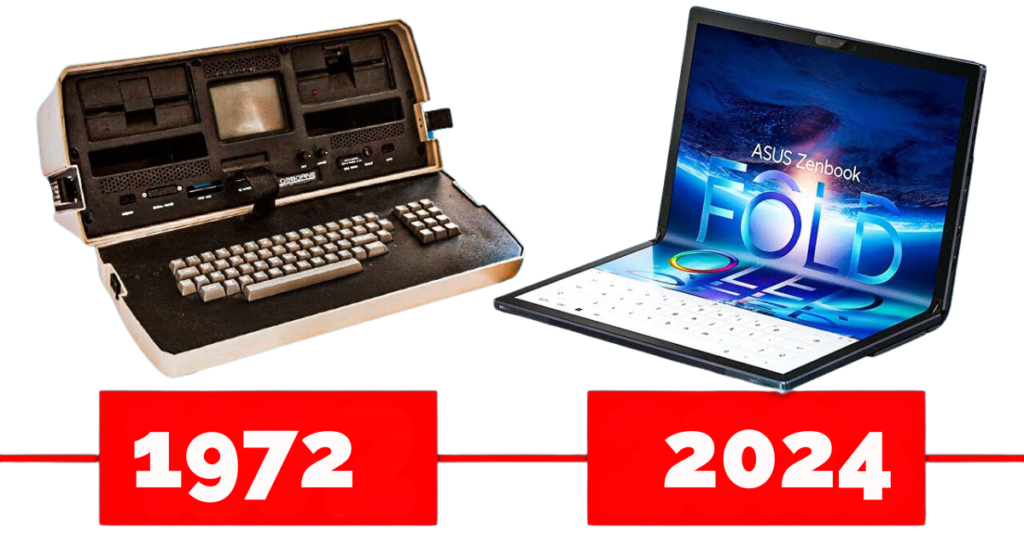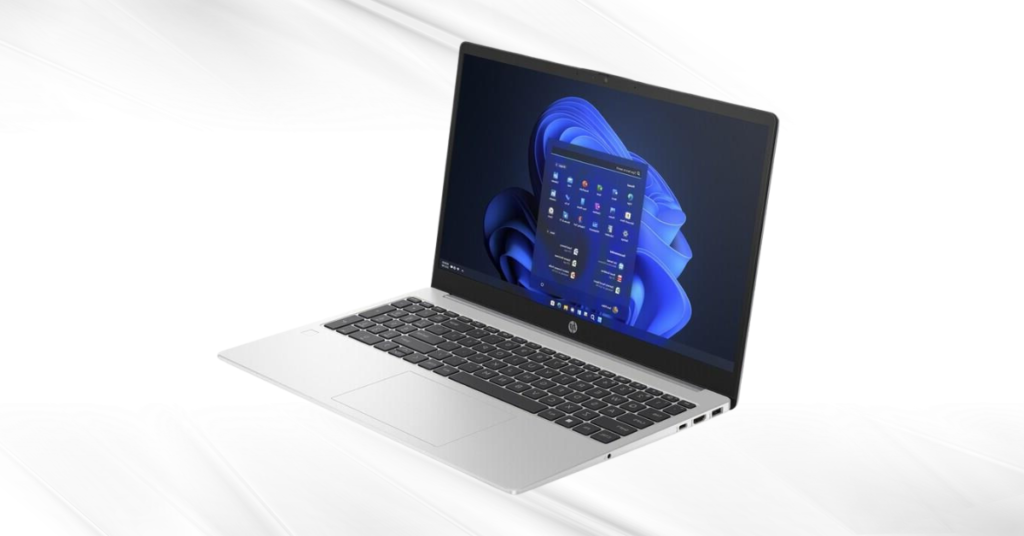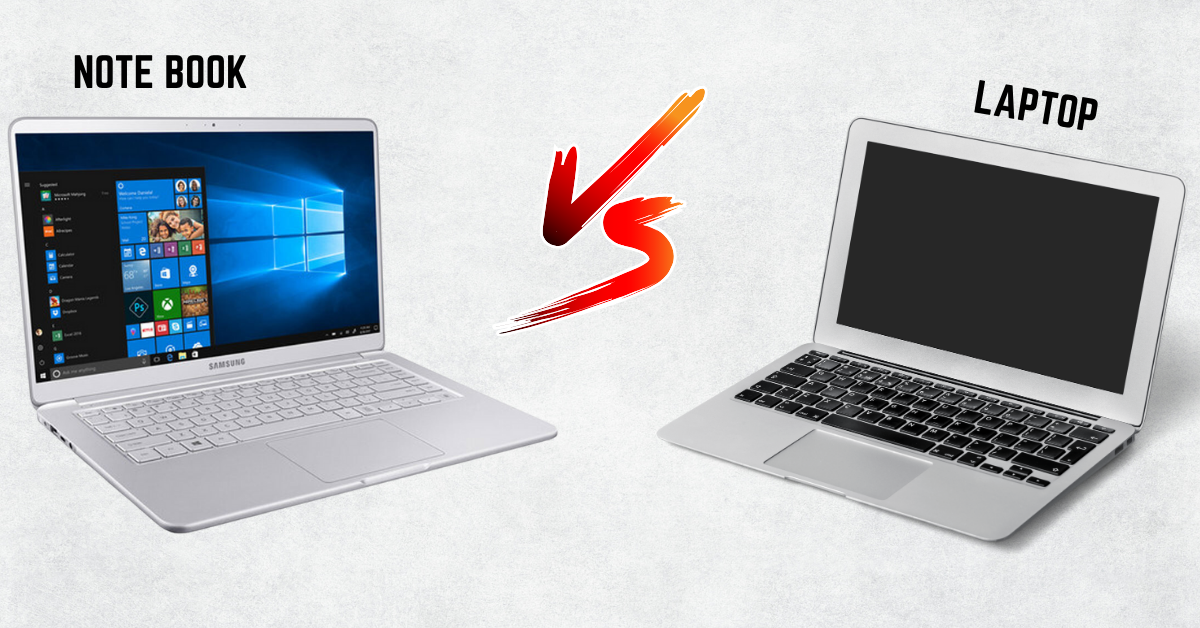Introduction of “Notebook” and “Laptop”
Although the terms “notebook” and “laptop” are frequently used equally in the context of mobile computing nowadays, they weren’t always that way. The differences between these two formerly separate categories have become blurry as technology has advanced. Understanding the differences in the notebook vs laptop debate—and why laptops came to be called notebooks—offers insights into how these devices transformed both in design and functionality over the years.
What is a Laptop?
A laptop is a small, portable computer designed to offer the same capabilities as a desktop computer, but in a compact form. Users can work or play while on journeys thanks to its built-in screen, keyboard, trackpad (or mouse substitute), and batteries. Although they were initially somewhat large, laptops were very popular because of their small size in comparison to desktop computers.
Definition and Key Features of a Laptop
Laptops are characterized by their ability to perform general computing tasks, such as web browsing, running software, and multimedia playback, with built-in hardware that supports various use cases. Some of the key features of laptop devices include portability, versatility, and the ability to handle a wide range of applications, making them essential tools for both work and entertainment.
Portability: While traditionally heavier than notebooks, laptops are still designed to be mobile, featuring foldable designs with an integrated display and keyboard.
Processing Power: Laptops come with powerful processors, often equal to or surpassing those of desktop computers, making them suitable for more intensive computing tasks like gaming, programming, or video editing.
Battery: The rechargeable battery allows for hours of usage away from a power source.
Connectivity: Laptops are equipped with various ports (USB, HDMI, etc.) and wireless technologies (Wi-Fi, Bluetooth) for external peripherals and internet access.
Historical Background of Laptops

The history of laptops dates back to the early 1980s. One of the first commercially available laptops, the Osborne 1, was introduced in 1981. With a 5-inch display and a weight of more than 24 pounds, it was big and heavy by today’s standards. The laptop’s form factor changed as technology developed, becoming more lightweight, thin, and effective. Thanks to advancements in processing power and longer battery life, laptops became widely used by the early 2000s and started to displace desktop computers for many consumers.
What is a Notebook?

A notebook, in the world of computers, is a smaller, more lightweight version of a laptop. The term “notebook” was coined to emphasize the portability and slim design of these devices, which resembled the paper notebooks people used in school or work.
Definition and Key Features of a Notebook
Notebooks are portable computers that focus on sleek design and ease of mobility. Some of their main characteristics include:
Lightweight: Typically, notebooks weigh less than traditional laptops, often around 2 to 4 pounds.
Thinner Design: Notebooks are designed to be ultra-thin and easy to carry, making them ideal for frequent travelers or individuals needing something compact.
Lower Performance: Although notebooks can handle general computing tasks, they tend to be less powerful than laptops due to their smaller size and energy-efficient components.
Long Battery Life: Notebooks often prioritize energy efficiency, resulting in longer battery life, though with slightly reduced performance capabilities.
Notebook vs Laptop: Key Differences
While the terms “laptop” and “notebook” have come to represent the same category of devices in modern times, subtle differences remain in their design and intended use cases.
Design and Size
Laptop: Laptops are generally larger, with screen sizes ranging from 13 inches to 17 inches, and are heavier than notebooks. Their design accommodates more powerful internal components, such as larger batteries, cooling systems, and discrete GPUs for advanced computing tasks.
Notebook: Notebooks prioritize portability, often featuring screen sizes of 11 to 14 inches. They are typically lighter and thinner than laptops, and their minimalist design reduces internal complexity.
Performance
Laptop: Due to their size and ability to house more robust components, laptops tend to offer higher performance levels. They are often used for resource-heavy tasks like video editing, gaming, or software development.
Notebook: Notebooks are designed for lighter tasks like web browsing, word processing, and media consumption. While they may come with capable processors, they often lack the high-end components found in more powerful laptops.
Battery Life
Laptop: While modern laptops are equipped with more efficient batteries, their higher-performance components can drain energy faster. A typical laptop battery lasts between 4 to 8 hours, depending on usage.
Notebook: Notebooks tend to prioritize energy efficiency, meaning they can often last longer on a single charge, sometimes up to 10-12 hours, as they utilize low-power processors and minimalistic hardware.
Use Cases
Laptop: Ideal for power users who need a portable yet high-performance machine for professional work, gaming, or multimedia production.
Notebook: Suited for those who need a device for everyday tasks, travel, or as a secondary device for light productivity and entertainment.
Price Range
Laptop: Laptops generally start at a higher price point, ranging from $500 to $2000, depending on the specifications and features.
Notebook: Notebooks are typically more affordable, with prices ranging from $300 to $1000, making them a cost-effective choice for basic computing needs.
Comparison Table: Notebook vs Laptop
| Feature | Laptop | Notebook |
| Design & Size | Larger, heavier, 13-17 inch screens | Slimmer, lighter, 11-14 inch screens |
| Performance | High-performance, powerful components | Moderate performance, light use |
| Battery Life | 4-8 hours | 10-12 hours |
| Use Cases | Professional work, gaming, multimedia | Browsing, document editing, travel |
| Price Range | $500 – $2000 | $300 – $1000 |
Conclusion
While laptops and notebooks once referred to different categories of portable computers, the line between them has blurred over the years. The early laptops were big and powerful, the notebooks lightweight and mobile; over time, though, technology advanced, and nowadays, the lines between the two are blurred, and terms are used interchangeably within the marketplace.
The reason why laptops started calling themselves notebooks is the shift in design philosophy from portability and sleekness, requiring lightweight construction, as defining what users want from their devices. Today, whether you call your portable computer a laptop or a notebook, the primary goal remains the same: providing users with the convenience of mobility without sacrificing performance.
Explore Electro Gadget Plus.
FAQ’s
What is the difference between a Notebook and a Laptop?
The terms “Notebook” and “Laptop” are often used interchangeably today, but historically, Laptops were larger and more powerful, while Notebooks were designed to be more lightweight and portable.
Why are Laptops called Notebooks?
Laptops became thinner and lighter over time, resembling traditional paper Notebooks in terms of portability and size. This evolution in design led manufacturers to adopt the term “Notebook” to highlight their mobility and convenience.
Which is better: a Notebook or a Laptop?
It depends on your needs. Laptops generally offer more power and are suitable for intensive tasks like gaming and video editing, while Notebooks prioritize portability and battery life, making them ideal for casual use and travel.
Can Notebooks handle heavy software?
Notebooks are typically designed for lighter tasks like web browsing and document editing. They may struggle with heavy software compared to Laptops, which are equipped with more robust hardware for resource-intensive applications.
Are Laptops more expensive than Notebooks?
Yes, Laptops tend to be more expensive than Notebooks due to their higher performance capabilities and advanced features. However, Notebooks are generally more affordable and suited for basic computing needs.









